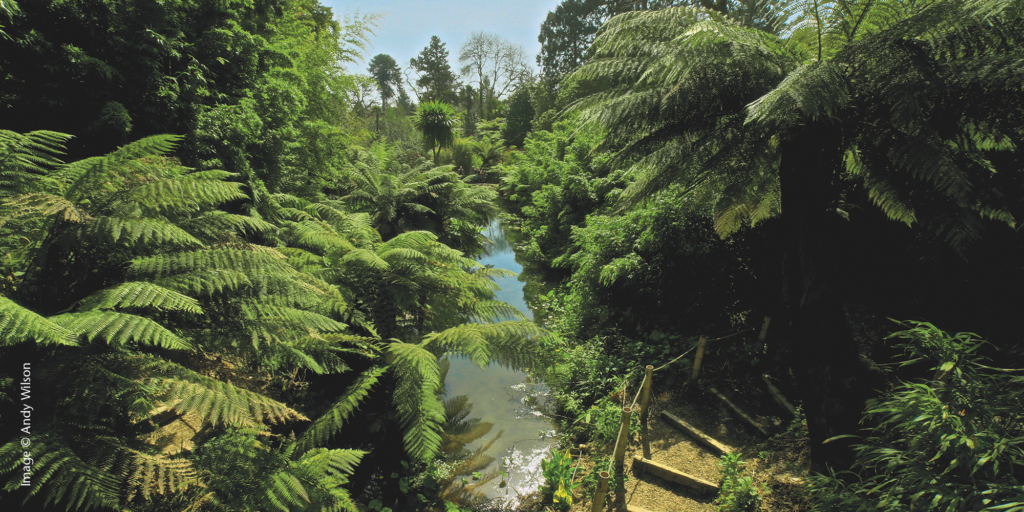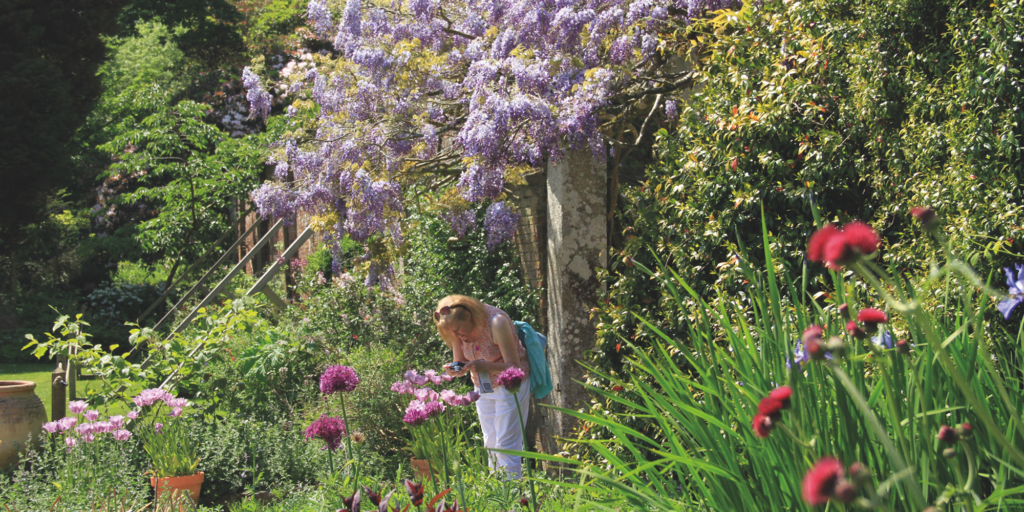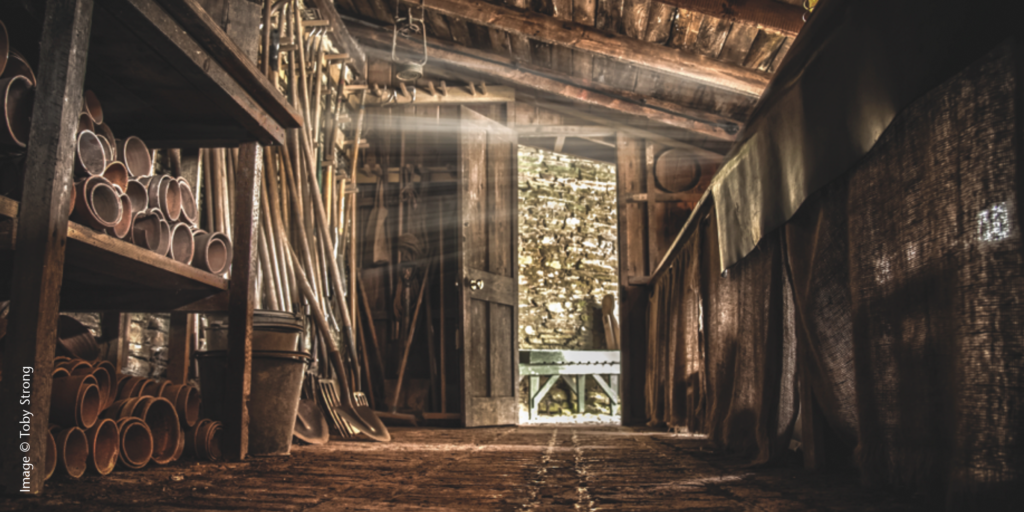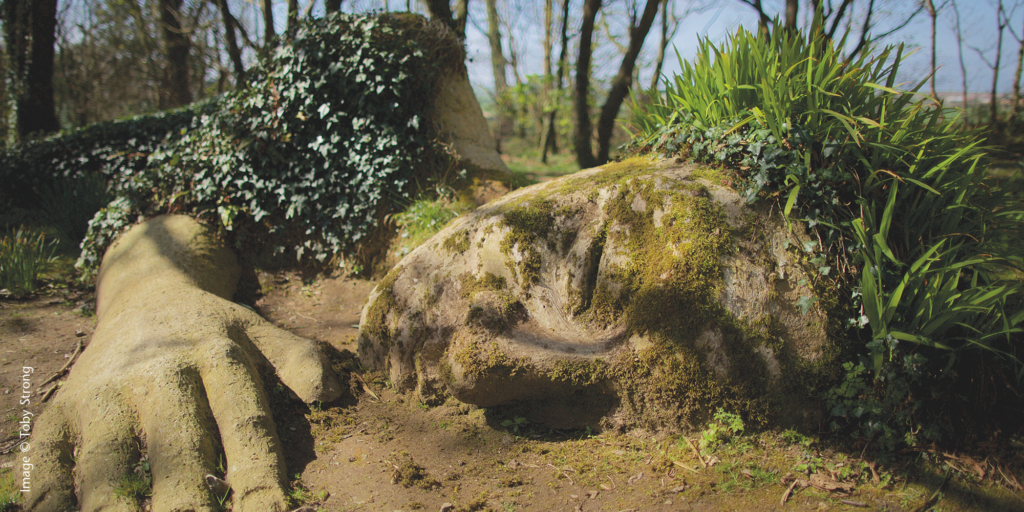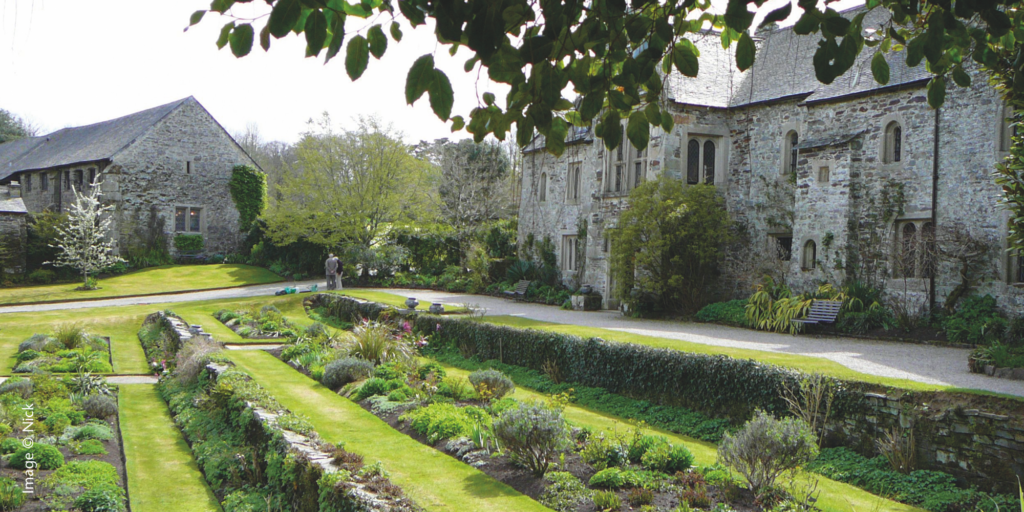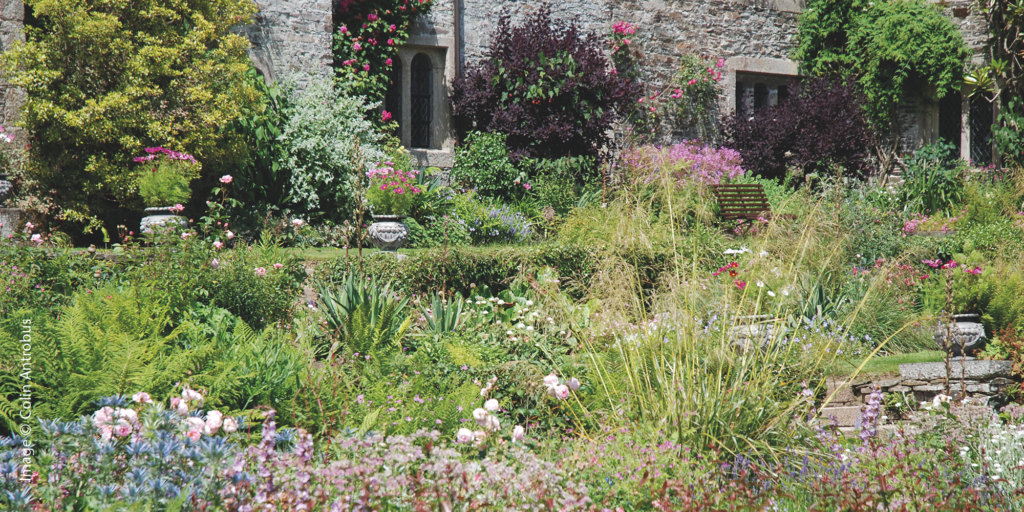

Forever flourishing
A trip down the cobbled paths of memory lane to glance behind at the rich and fascinating histories of some of Cornwall’s most treasured gardens.
We all know the story of The Secret Garden; a hidden gem long forgotten, discovered by chance, fallen in love with and brought back to life to be kept a secret no more. What you may not know is that there are ‘secret gardens’ all over Cornwall, lying in wait for their next visitors to push open a door hidden by ivy and fern and step into a world of vibrant colour and eager growth, each bursting into bloom for the summer.
Lost to the brambles of time for almost 80 years, the gardens of Heligan’s 200-acre estate had long been forgotten after the gardeners who carefully tended the ever-expanding collection of exotic flora were sent to the trenches of World War I. Out of 14, sadly only four would return. While this would be a story to dismantle many of the large estates throughout Britain, Heligan was different in the way that the gardens were never sold or developed, but left to slumber under a veil of ivy and thorns for decades, waiting to be discovered. Today, visitors can stumble upon the Lost Valley with its enchanting ponds and exquisite wildflowers, carpeted with bluebells in the spring. A peaceful home to both wildlife, ancient trees and the traditional practises of coppicing and charcoal burning.
Since 1659, Heligan was the ancestral home of the Tremayne family, who lived in the manor house. Incredibly, it is still owned by the same family, having been passed down to one of the descendants, John Willis. On 16th February 1990, he accompanied Tim Smit in a discovery that would change their lives forever, uncovering The Lost Gardens of Heligan. Stumbling upon the remnants of what was to be known as the ‘Thunderbox Room’, they came across a motto etched in pencil on the wall – ‘Do not come here to sleep or to slumber’ – alongside the signatures of the lost gardeners, signed August 1914. “It had brought the garden alive for us, real people had led real lives here, and we now knew some of their names. It felt at once like a shared intimacy and an invasion of privacy. We could not ignore it even if we wanted to,” Tim explains in his book The Lost Gardens of Heligan. “We were fired by a magnificent obsession to bring these once glorious gardens back to life in every sense and to tell, for the first time, not tales of lords and ladies but of those ‘ordinary’ people who had made these gardens great, before departing for the Great War.” Today, Heligan represents 200 acres of paradise for the explorer, wildlife enthusiast, plant lover and garden romantic, and with Victorian gardens, pleasure grounds and even a jungle to entice you, you can expect a unique experience all year round.
“The history of the gardens of Cornwall, great and small, is unique and remarkable,” explains Sir Robert Owen, Chairman of the Cornwall Garden Society. “It is the story of passionate horticulturists, the owners of gardens and their gardeners, who took full advantage of our wonderful climate and landscape, and, so importantly, introduced many wonderful plants from all over the world. The story of the intrepid plant hunters associated with Cornish gardens – sent out to roam the world in search of rare plants, and successfully propagated them in Cornwall – is fascinating, and made a very significant contribution to horticulture in the UK. We, the Cornwall Garden Society, can claim some insight into the historical importance of the Great Gardens of Cornwall, having ourselves been in existence for over 120 years, and enjoying a close relationship with many of the gardens.”
Another historic Cornish estate with gardens and grounds worthy of our admiration can be found at Cotehele. Having been the ancestral home of the Edgecumbe family from 1353 to 1947, the gardens here have been carefully developed since the 16th century into the thriving utopia they provide today, with the Woodland Valley garden being a charming late Victorian addition. Spanning 14 acres of gardens and 12 acres of orchards, Cotehele’s garden is unique and varied all year round, but a visit in summer is particularly enchanting. The borders in the upper gardens become a myriad of herbaceous plants and colourful flowers, while the terraces burst with hydrangeas, roses, geraniums and irises. The 19th century saw a boom for local industries, and Cotehele Quay would bustle with busy vessels loading and unloading cargo. Paddle steamers made their way upriver to see the Tamar Valley’s famous blossoming orchards of Cotehele, which are still there to be enjoyed today. Preserved by the Edgecumbe family as a historic talking-point, rather than a comfortable family home, Cotehele is now in the hands of the National Trust. Built in medieval times, the current house is mostly Tudor and is full of stories about the family who owned it for 600 years, with an expansive garden cultivated over hundreds of years. Cotehele invites explorations of the formally planted terraces, adventures in the Valley Garden amongst the medieval stewpond and dovecote leading down to the River Tamar, or tranquil wanderings in the Upper Garden around a pond of red and white water lilies.
Over in Penzance, the incredible and extensive collection of sub-tropical plants that you’ll stumble upon if you find yourself walking the winding paths of Morrab Gardens have been accumulated over many years. The original planting in the 1880s was a result of gifts from local estates like Trengwainton, Trewidden and Tresco after Penzance had become a popular seaside resort and demand for a recreational park became apparent. Upon holding a competition to design the park, London designer, Reginald Upcher, won the prize of 20 guineas with his plan for the three-acre site. The original design, which included a bandstand and sub-tropical garden divided by a series of curvilinear walks, is still much in evidence today.
When the park opened in 1889, the Gardeners’ Chronicle wrote: “One of its features is a Palm-grove, where tourists may fancy themselves in the tropics or on Mediterranean shores.”
A significant role for the gardens was the study of acclimatisation of rare sub-tropical plants, a tradition which continues to this day. “But the importance of the major Cornish gardens is not simply historical,” Sir Robert Owen continues. “They continue to play a role that is both important to Cornwall and to horticulture more widely. Not only are they such a wonderful resource for those of us privileged to live in the county, but they rightly continue to attract visitors in vast numbers, thereby making an important contribution to our local economy. Secondly, they are a living phenomenon. Whilst many are of considerable age, others have been created or restored within recent times, most notably the Eden Project. Thirdly, the gardens provide a bank of experience of horticulture, which will be invaluable as we begin to address the effects of
global warming.
“They also provide an important training ground for those, young or old, seeking to pursue a career in horticulture, a resource supported by both practical and academic courses, and facilities for research run by academic institutions, such as Duchy College, Rosewarne and Eden Project Learning. I have no doubt that as we adapt to climate change, now accepted as happening by even the most diehard of sceptics, the role of Cornish gardens and their gardeners will be as great and as important for the future as it has been in the past.”
